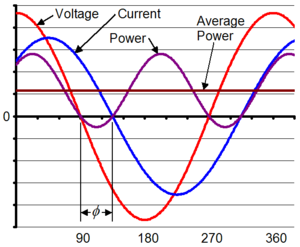ggunn
PE (Electrical), NABCEP certified
- Location
- Austin, TX, USA
- Occupation
- Consulting Electrical Engineer - Photovoltaic Systems
Now I'm confused. I thought that Pavg referred to power averaged over time. How can you have an instantaneous value for something averaged over time that is different for different points in time? I'm a long time out of school, but I remember (rightly or wrongly) average power and RMS values as being flat horizontal lines in the time domain.Yes, we associate the power with the value of Pavg... But does it not stand to reason if we use Pavg, apparent, real, or reactive, then there is a waveform associated with it?
RMS means root mean square, which is the square root of the average (mean) of the square of the AC waveform. When you square the AC waveform, it all becomes positive, when you average it, it becomes a flat line, and when you square root it, you undo the squaring you did in the first step, but you take the positive root. This results in a flat line in the time domain with a positive value in Y - voltage, current, or power.
But like I said, I'm a long time out of school and I've slept several times since then. :grin:
Last edited:


